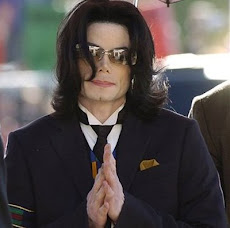By Jonathan Amos | |
 A camera on the probe shows the ejecta plume about 20 seconds after impact Nasa's experiment last month to find water on the Moon was a major success, US scientists have announced. The space agency smashed a rocket and a probe into a large crater at the lunar south pole, hoping to kick up ice. Scientists who have studied the data now say instruments trained on the impact plume saw copious quantities of water-ice and water vapour. One researcher described this as the equivalent of "a dozen two-gallon buckets" of water. "We didn't just find a little bit; we found a significant amount," said Anthony Colaprete, chief scientist for the Lunar Crater Observation and Sensing Satellite (LCROSS) mission. No doubt October's experiment involved driving a 2,200kg Centaur rocket stage into the 100km-wide Cabeus Crater, a permanently shadowed depression at the Moon's far south. At the time, scientists were hoping for a big plume of debris some 10km high which could be seen by Earth telescopes.
The actual debris cloud was much smaller, about 1.6km high, but sufficiently large to betray the evidence researchers were seeking. The near-infrared spectrometer on the LCROSS probe that followed the rocket into the crater detected water-ice and water vapour. The ultraviolet-visible spectrometer provided additional confirmation by identifying the hydroxyl (OH) molecule, which arises when water is broken apart in sunlight. "We were able to match the spectra from LCROSS data only when we inserted the spectra for water," Dr Colaprete said. "No other reasonable combination of other compounds that we tried matched the observations. The possibility of contamination from the Centaur also was ruled out." Useful resource The total quantity of H2O spied by the instruments was more than 100kg. It came out of a 20m-30m wide hole dug up by the impacting Centaur rocket. The LCROSS scientists stressed that the results presented on Friday were preliminary findings only, and further analysis could raise the final assessment of the amount of water in Cabeus. Peter Schultz, from Brown University and a co-investigator on the LCROSS mission, said: "What's really exciting is we've only hit one spot. It's kind of like when you're drilling for oil. Once you find it in one place, there's a greater chance you'll find more nearby." The regular surface of the Moon as seen from Earth is drier than any desert on our planet. But researchers have long speculated that some permanently shadowed places might harbour considerable stores of water, perhaps delivered by impacting comets billions of years ago. If future investigations find the quantities to be particularly large, this water could become a useful resource for any astronauts who might base themselves at the lunar poles. "It can be used for drinking water," said Mike Wargo, Nasa's chief lunar scientist for exploration systems. "You can break it down and have breathable air for crews. But also, if you have significant quantities of this stuff, you have the constituents of one of the most potent rocket fuels - oxygen and hydrogen."  The Centaur dug out a hole 20m-30m wide In September, data from three spacecraft, including India's Chandrayaan probe, showed that very fine films of H2O coat the particles that make up lunar soil. Scientists behind that finding speculated that this water might migrate to the even cooler poles, much as water vapour on Earth will condense on a cold surface. This cold sink effect could be supplementing any water delivered by comets, they said. If cometary material did reside in places like Cabeus Crater it would be fascinating to examine it, commented Greg Delory, from the University of California, Berkeley. "The surfaces in these permanently shadowed areas, such as the one LCROSS impacted, are very cold," he told reporters. "That means that they tend to trap and keep things that encounter them - compounds, atoms and so forth. And so they act as record keepers over periods as long as several billion years. They have a story to tell about the history of the Moon and the Solar System." LCROSS was launched by Nasa on 18 June as part of a double mission which included the Lunar Reconnaissance Orbiter (LRO). The latter, which continues to circle the Moon, measured a temperature of minus 230 Celsius at the base of Cabeus Crater. | |
Saturday, November 14, 2009
'Significant' water found on Moon
Subscribe to:
Post Comments (Atom)
Ghana Pundit Headline News
E-mail subscription
Pan Africa News
Graphic Ghana
MYJOYONLINE.COM
Peacefm Online - News with a vision
The Times - World News
The Times - Africa News
Pambazuka News :Emerging powers in Africa Watch
AfricaNews - RSS News
The Zimbabwe Telegraph
BBC News | Africa | World Edition
Modern Ghana
My Blog List
-
Has the US Overtaken China in African Investment? - Last week we had a flurry of email requests from reporters who wanted to ask us about the comparative Africa foreign direct investment (FDI) data on Chin...1 month ago
-
African Extractive Industries: PRC Neocolonialism - That the slow development of the African continent can be traced to Western colonialism is an archetype of this field of study: Mainly interested in extr...1 year ago
-
The Emerging Security Threats and Ghana Special Forces (Part 2) - By Lord Aikins Adusei Does Ghana Need Special Forces?West Africa where Ghana is situated occupies a strategically important position as a major energy supp...13 years ago
-
Egyptians mass in Tahrir to honour uprising - Hundreds of thousands of people have gathered in Cairo's Tahrir Square to commemorate the first anniversary of the Egyptian revolution that toppled their l...13 years ago
-
Egyptians mass in Tahrir to honour uprising - Hundreds of thousands of people have gathered in Cairo's Tahrir Square to commemorate the first anniversary of the Egyptian revolution that toppled their l...13 years ago
-
-
-
-
R.I.P.

AfriGator








No comments:
Post a Comment